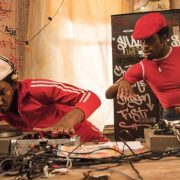It’s easy to feel bombarded and overwhelmed by the establishment’s incessant cultural and political propaganda. They offer no escape and no alternative: you must believe what is acceptable to believe and nothing else.
Schools and colleges and universities are establishment propaganda mills. Acceptable beliefs are drummed into us from the beginning of our lives, and the pressure never stops. Institutions and organizations continue the brainwashing.
The social contracts under which we are told we must operate are consistent with this incessant messaging. Go to school. Get an education. Pass exams. Get a certificate. If you do, you’ll get a job (not of your choice; you’ll be given one). Work for a hierarchy in an organization that dictates your goals, and channels the means available to you. Follow their rules.
Vote. It doesn’t make any mathematical difference if you do, and in any case the two parties are so alike that their policies do not differ. But it’s your duty to vote.
Respect and support the elites. They are better than you and you must follow their lead. When they are at their most corrupt and inept, that is when you must obey most diligently, because dissent causes instability, and we can’t have that.
The establishment does not want you to be an individual. That would be a disaster for them. They want you to be a worker, which means conforming and following others’ orders.
There Are Alternatives To The Establishment Path.
There are alternatives. Caitlin Flanagan writes about young people seeking an alternative curriculum from the one peddled in high school and college. She cited the online lectures of Jordan Peterson as an example. Joy Pullman picked up on this theme, quoting Flanagan in The Federalist recently.
“A parallel culture of ideas has emerged to replace a corrupted system,” she writes. What’s the corrupted system? The political and cultural left that “currently seems ascendant in our houses of culture and art, has in fact entered its decadent late phase, and it is deeply vulnerable.” Identity politics, she says, are one evidence and cause of this corruption.
To gain any real competence, Flanagan says, most people must self-educate through a growing “parallel culture of ideas.”
The Agile Life.
Now along comes another and much more practical guru of parallel pathing, in the person of Marti Konstant. And she packages the idea of parallel pathing in an activity: agile self-management.
Agile is a style of working that she first encountered in the world of software. Before Agile, the establishment method of software development was one in which periodic grand “releases” were scheduled to announce software program upgrades that incorporated supposedly huge numbers of person-hours of work in development, testing and refining. The release was a big event. But the big events did not reflect marketplace needs or marketplace feedback and were not efficient.
A group of different-thinking software developers replaced the old way with the agile way: sprints of work, rapidly generating prototypes, which could be quickly shared for feedback, which could be incorporated in a further prototype, until the software was agreeable to all the stakeholders and injected into the market in a series of frequent updates.
Marti then went on to apply Agile to marketing. Why should be the marketing process be marked by the occasional release of new “campaigns”, often after months of behind-closed-doors development by the “creative department”, risking failure because they did not incorporate continuous feedback from the market during the prototyping phase. Marti applied Agile to marketing – rapid iteration of ideas, testing via A-B and other methods, with input from all parts of the brandowner company (no silos), continuously updated and improved with feedback, always changing and getting better.
Now she urges us to apply Agile to our lives and careers. She recommends design thinking about your life: asking the entrepreneur’s question, “Who Am I?” and developing a theory – a testable hypothesis – about your future career. Proceed on the basis of active choice. Don’t take what they give you, but choose what you want. Apply A-B testing to your career by setting up side gigs and parallel paths. Take one of your hobbies and see if you can turn it into a business, working at night. Or take some online coursework to master a new skill that could be applied in a future career move. Take on some freelance work in a new area to see how you like it.
While doing all of this, optimize your personal brand. Stand for something and become known for it. Make that something unique and valuable. Take personal accountability for navigating to a future you will love and enjoy and in which you will thrive.
What Marti Konstant is proposing is a life of spontaneous order: individual responsibility and individual effort, relying on your own skills, your own connections and your own instincts in adapting to today’s changing marketplace, interconnecting with others for mutual benefit within a commitment to individual excellence.
The Parallel Path Becomes An Entirely New Direction.
Her concept of parallel path development is applicable in every aspect of our lives. We can escape the constraints and limitations of the establishment and their restrictive social contract not so much by rebelling but by parallel pathing. Find another way that does not confront the elites with their epic failure and incompetence, but competes with the establishment, and creates new value by out-performing the current standards. The new world of education provides one excellent example: home-schooling to escape the shaping of our children by the state; online education to learn what we want to learn as opposed to what they want us to learn; lifelong learning and continuous development of new skills to be agile on the path of our own choosing as opposed to stuck in the rut the establishment places us in.
Agile is a great way to think about setting out to create our own individual, independent but interconnected future. Design your own. Pursue your own path, which might involve hopping and skipping from side to side here and there, jumping from one rock to another, to get where you want to go and to find out where you are best and most comfortable. Personal excellence is an achievement we can all strive for, and Agile provides us with a method.













